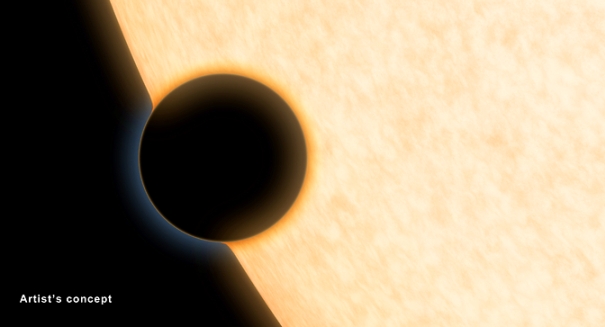
Clear skies and water vapor were recently detected on HAT-P-11b, a Neptune-sized planet outside of our solar system.
A study published Wednesday in the journal Nature reveals that clear skies and water vapor have been discovered on a Neptune-sized gaseous planet outside of our solar system.
The planet, labeled HAT-P-11b and categorized as an exo-Neptune due to its size, orbits the star HAT-P-11 and is located 120 light-years away in the Cygnus constellation, according to a recent statement from NASA. One challenge in analyzing the planet’s atmosphere was its size, as larger Jupiter-sized planets are easier to see from their circumferences and inflated atmospheres.
“This discovery is a significant milepost on the road to eventually analyzing the atmospheric composition of smaller, rocky planets more like Earth,” said John Grunsfeld, assistant administrator of NASA’s Science Mission Directorate in Washington, who was not part of the study. “Such achievements are only possible today with the combined capabilities of these unique and powerful observatories.”
Researchers of the study observed the atmosphere of HAT-P-11b using Hubble’s Wide Field Camera 3 and transmission spectroscopy, where the planet was observed as it crossed in front of its parent star. Through this method, water vapor was detected when the planet absorbed some of the starlight and left distinct signatures in the light that reached the team’s telescopes.
“We think that exo-Neptunes may have diverse compositions, which reflect their formation histories,” said co-author Heather Knutson of the California Institute of Technology in Pasadena. “Now with data like these, we can begin to piece together a narrative for the origin of these distant worlds.”
The research team also utilized telescopes from Kepler and Spitzer to confirm the detection of water vapor on the planet and that it did not have clouds blocking the view. This leaves the team hopeful that more cloudless planets can be located in the future for analysis.
“The work we are doing now is important for future studies of super-Earths and even smaller planets, because we want to be able to pick out in advance the planets with clear atmospheres that will let us detect molecules,” said Knutson.
Leave a Reply